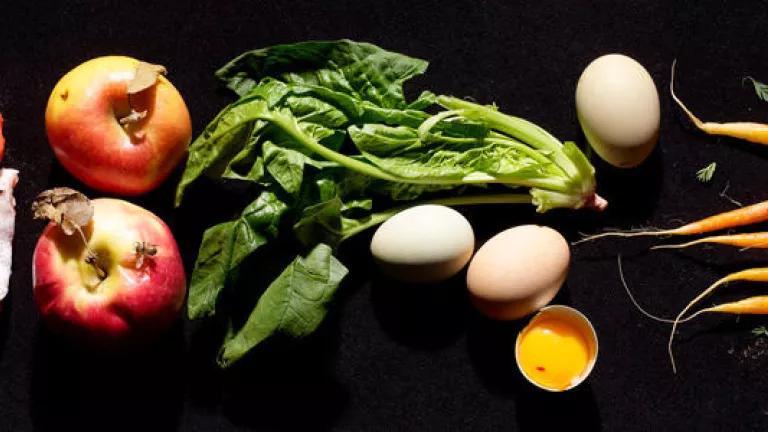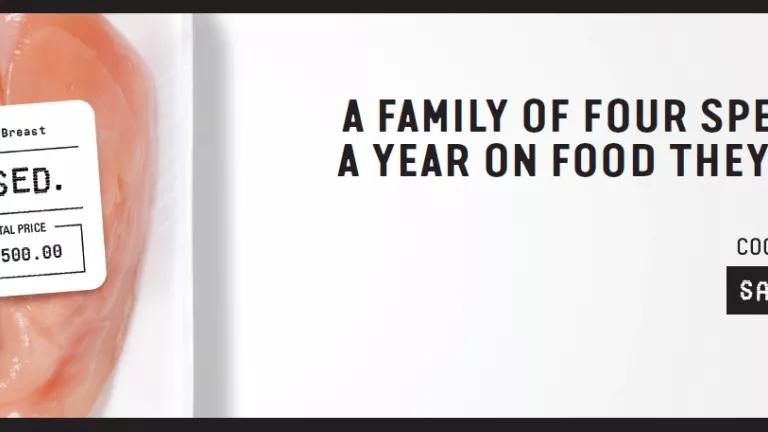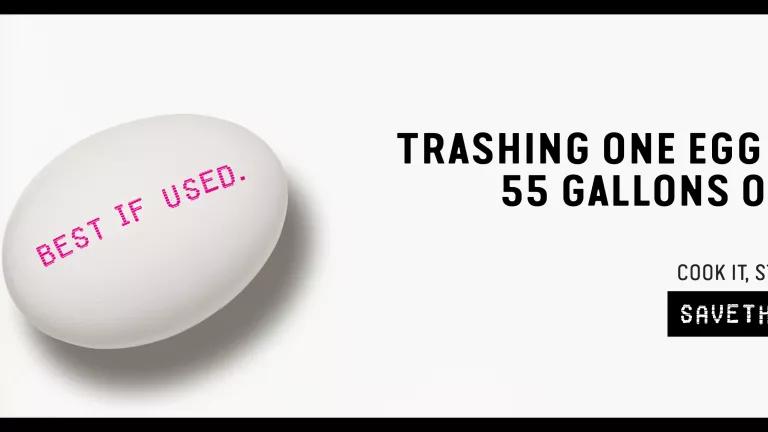Increasing Public Awareness About Food Waste Prevention Guide
Given the magnitude of consumer household food waste, cities can play an important role in both raising awareness and providing action-oriented strategies that consumers can implement in their homes to prevent food from being wasted in the first place.

Nobody plans to waste food, and still the average American throws away close to 200 pounds of food at home annually. Households collectively produce 43 percent of all the food waste in the United States, which is more than restaurants and grocery stores combined. And yet, people don’t believe they waste much food: 75 percent of surveyed Americans say they waste less food than average, a statistical impossibility. Businesses and institutions are also major generators of food waste. According to nationwide figures, consumer-facing businesses collectively generate approximately 40 percent of all food waste, just shy of the overall proportion generated at the household level. Many of the reasons for waste in food businesses are related to perceived consumer attitudes about presentation and abundance. If consumers deliver a different message about how they value preventing food waste, this can help motivate businesses to implement food waste prevention strategies in their operations.
Given the magnitude of consumer household food waste, cities can play an important role in both raising awareness and providing action-oriented strategies that consumers can implement in their homes to prevent food from being wasted in the first place.
ReFED’s “Roadmap to Reduce U.S. Food Waste by 20 Percent,” found that consumer education provides the highest return on investment of all strategies reviewed and is a leading strategy for preventing food waste in America. However, despite that return on investment, public education campaigns are expensive to develop and deliver.
NRDC has produced Save The Food to be an open source–like public education campaign that raises awareness about the impact of household food waste and helps arm consumers with the tools to prevent food from going to waste at home. Many of the assets can be downloaded directly from the Partner Kit. With well-researched and eye-catching multimedia advertisements, the campaign was developed by a prominent advertising agency and is based on extensive marketing research. The foundation of the campaign is a “Best if Used” series in which a common food item is stamped with the phrase and is paired with a shocking statistic about the economic or environmental consequences of wasting food; the series plays on consumer’s general misunderstanding of the dates printed on our food, often mischaracterized as “expiration dates.”
All advertisements point back to SaveTheFood.com, a website stocked with interactive education and narrative making it easy and fun to prevent food from going to waste. A storage guide details the optimal way to store food in order to prolong freshness. The Guest-imator helps plan portions for complicated large gatherings like Thanksgiving or summer barbecues, which often lead hosts to overprepare in order to ensure that their guests are satisfied. A Meal Prep Mate tool helps portion for weekly meal planning. SaveTheFood.com also has recipes designed to repurpose food scraps like potato peels or herb stems; use up food past its prime, like stale bread or milk that is turning sour; and rejuvenate leftovers into appetizing new concoctions.
It is our hope that cities will use Save The Food to advance their goals for public education on food waste prevention. In this way, limited resources can be used for maximum distribution rather than to design a new campaign from scratch. The assets can be used on public bulletin boards or in city-owned properties. Some cities have contracted time on private billboards or bus shelters to display the ads. Nashville secured donated space on its highly visible digital billboard, “The Nashville Sign.” The city of Burbank placed ads on 25 waste trucks and 23 bus shelters. The Minneapolis–St. Paul International Airport played a public-service video on screens in the baggage claim area. St. Mary’s College of California displayed posters in its dining hall, ads in napkin dispensers on tables, and communicated ways the kitchen staff were helping reduce waste, encouraging the students to join in.
By promoting a national campaign, participating cities’ education efforts will be backed and boosted by the campaign’s reach in other cities, nationally, and across the internet.
We cannot adequately address food waste without changing consumers’ attitudes and behaviors on a societal scale. And yet, behavioral change is hard. The drivers of food waste are rooted in good intentions and long-held habits. Change takes time and tenacity. Therefore, efforts with continuity, longevity, and repetition will be the most successful.
Related Content

Denver Solid Waste Management Helps Denverites Save the Food

Turning My Meal Prep Fails Into a Food Waste Prevention Tool




















